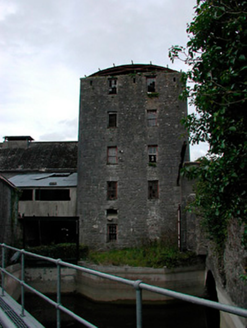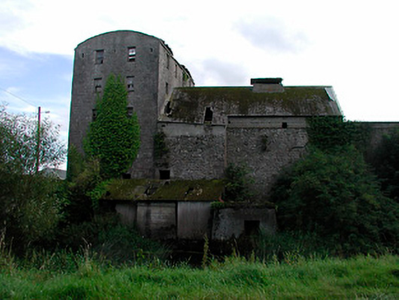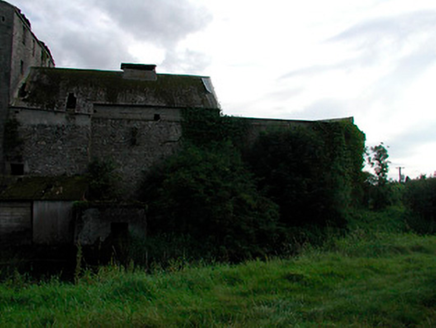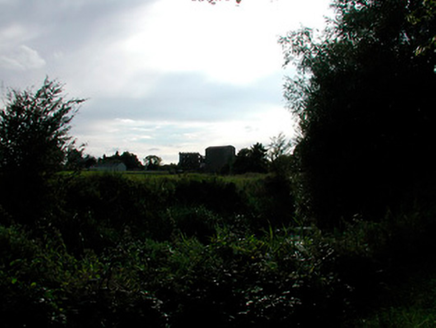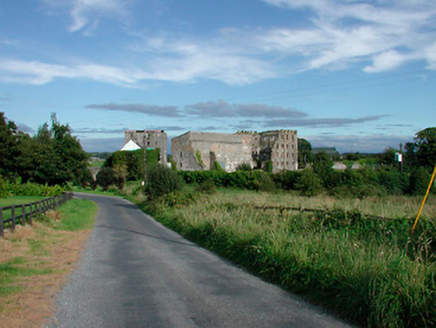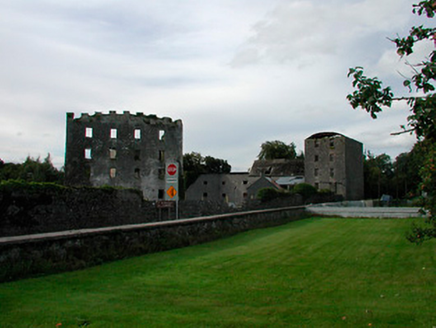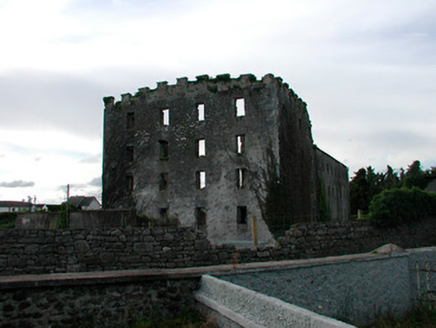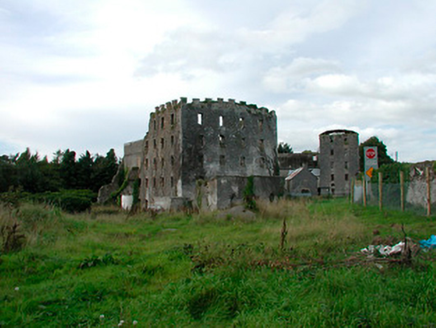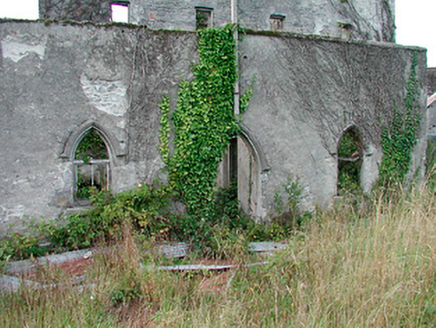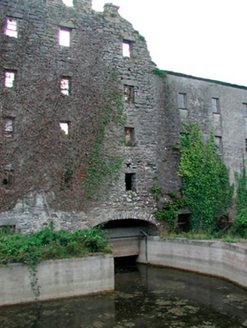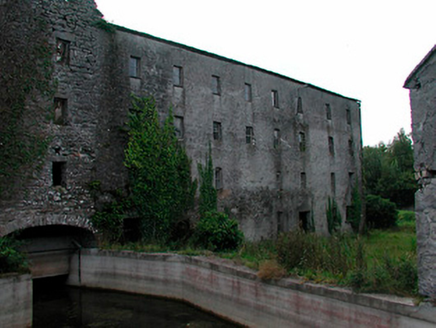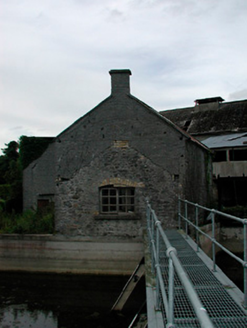Survey Data
Reg No
15321032
Rating
Regional
Categories of Special Interest
Architectural, Social, Technical
Original Use
Kiln
Date
1760 - 1800
Coordinates
233711, 236423
Date Recorded
03/09/2004
Date Updated
--/--/--
Description
Corn mill complex, built c.1770 and extended c.1830, comprising main multiple-bay five-storey building on L-shaped plan, four-bay five storey mill and associated ancillary structures including the remains of a corn kiln to west. Now derelict and out of use. Roofs now gone, brick crenellated parapet with limestone coping over to main structure and barrel-vaulted corrugated metal roof to four-bay five-storey structure. Constructed mainly of rubble limestone with lime render over. Segmental-headed waterwheel opening to north side of north-facing building (possibly a corn store) with dressed limestone voussoirs. Flush dressed limestone quoins to corners of main building. Square-headed window openings remains of timber sliding sash and timber casement windows, cast-iron bars to ground floor windows. Ruins of three-bay single-storey building with pointed-arched windows and hoodmouldings over to south of main structure, possibly a mill worker's cottage. Set back from road in own grounds on south bank of River Brosna and to west of Coola Bridge. Remains of millrace and sluices to north running east-west. Rubble limestone boundary wall to west.
Appraisal
A substantial mill complex, although largely derelict, which remains a significant and imposing feature in the landscape. It is one of a number of corn mills along the River Brosna in south County Westmeath. This complex acts as a physical reminder of the great boom that took place in the Irish corn milling industry during the late eighteenth and early nineteenth-century. Corn mills were amongst the biggest building projects in Ireland at the time and Coola Mills would have played a major role in the social and economic history of Kilbeggan during this period. According to local sources, Coola Mill was a small scale milling operation owned by the Fitzpatrick Family (who owned the mill at nearby Ballinagore) but was sold to a Mr. R Connolly in 1781. The Connolly Family greatly expanded Coola Mills and by 1790 it was producing more flour than any other mill in Westmeath, sending 4,693 tonnes to Dublin in 1790. Although largely a utilitarian industrial complex, the crenellated parapet is an interesting architectural feature that acts as a landmark in the area. The single-storey mill (possible) worker's cottage is unusual in that it has Gothic detailing and is similar in style and appearance to a modest early nineteenth-century gate lodge serving a country house. Indeed, there is cartographic evidence to suggest that this may have been a gate lodge serving a property known as Coola Cottage (the property of Gustavus Lambert Esq. and leased to J. Connolly, Esq c. 1837), which was located to the immediate south of this building but now demolished. This complex, including ancillary structures such as the mill race to the north and the corn kiln to the west, is one of the most substantial industrial edifices of the period in Westmeath and represents an important element of the architectural heritage and industrial archaeology of the area.
